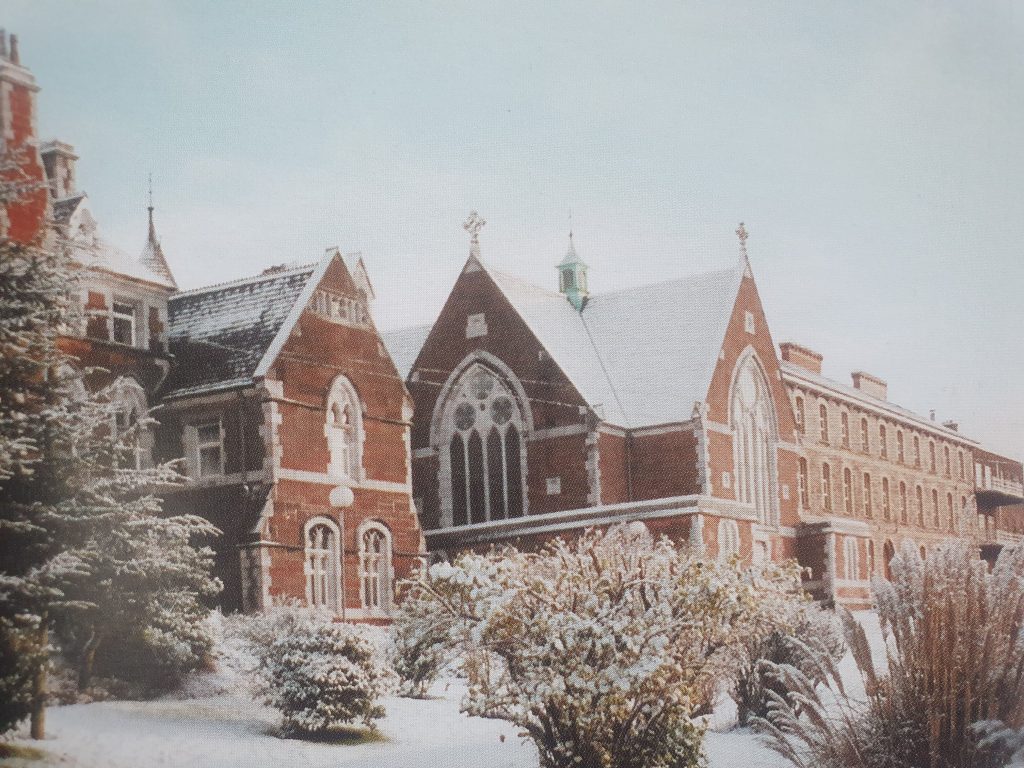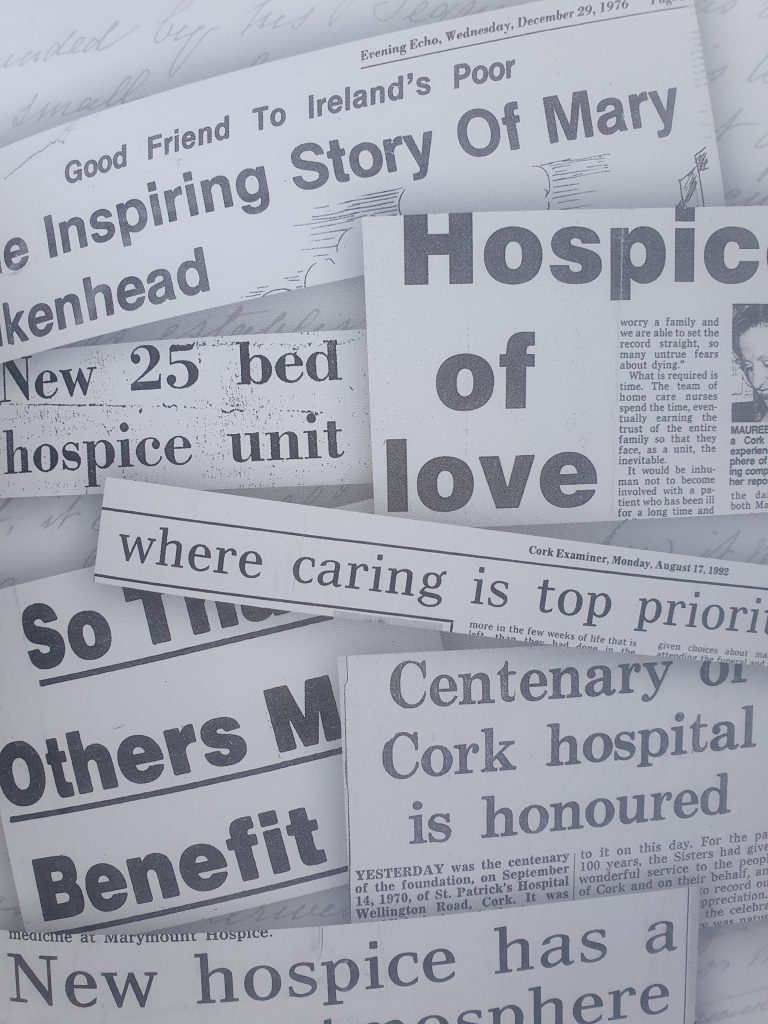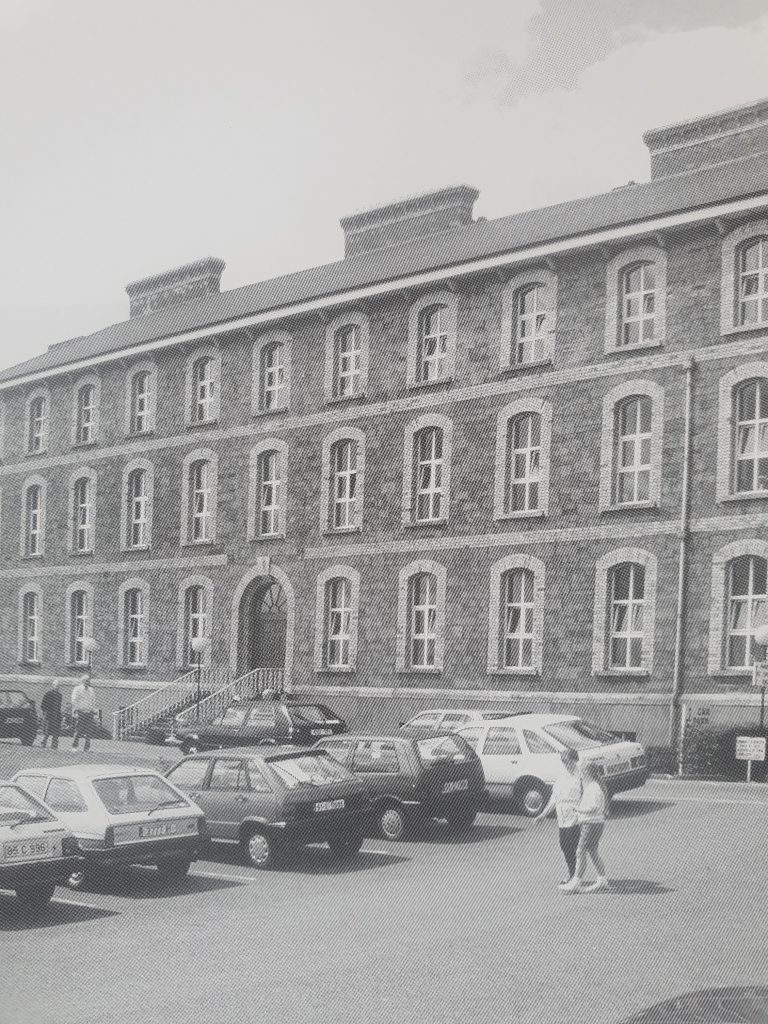Learn More About
Our History
Over 150 years of Marymount Hospital & Hospice. From a doctors dream, through the opening of St. Patrick’s Hospital in 1870 to Marymount University Hospital & Hospice as it is today and ever growing.


A Doctors Dream
Early in December 1867, great excitement was created in a narrow and unfashionable street in Cork, by the rumour that an eccentric old gentleman, residing in the street, had been found dead. The bread man had noticed that the man had not taken in his bread and notified the police. They tried to gain admittance by knocking and thumping on the door.
They eventually broke it open and forced an entrance. The crowd rushed in. At last the Rev. Father Delay, a curate in Passage and a close friend of the deceased made his appearance. He tried to enforce law and order.
Opening of Saint Patrick’s Hospital 1870
Mother de Chantal continued to oversee the construction of the building and strove to have it completed within the time allowed in Dr. Murphy’s will. When the building was near completion in the summer of 1870, Mother Francis Mary Scholastica Margison paid a visit to Cork to discuss with Mother de Chantal the final arrangements.
A few days before the official taking over of the new Hospital (14th September 1870), Mother Scholastica sent Mary Anne Heaton from Dublin to Cork to have beds ready, fires lighted and some little preparation made for the Sisters. The Rev. Mother, imagining that the house was completed, gave Mary Anne her directions, and told her among other things to seek out the builder and get the keys. Little did she know that keys were a rather superfluous luxury as there were no doors to lock.
On the morning of the 14th September, escorted by Mother Scholastica, the six Sisters appointed to form the new community in Cork, began their journey from Dublin. They were Sr. Mary Sebastian Canivan, Sr. Mary Andrew Delamere, Sr. Mary Jerome Browne, Sr. Mary Austin Coyle, Sr. M. Dismas Bowen and Sr. Joseph Veronica. The Mother General, Mother Francis Magdalen McCarthy, had taken leave of them in good spirits.


Growth and Change: St Patrick’s Hospital into the Twentieth Century
Fast forward to the Annual Report of St Patrick’s Hospital in 1903, a snapshot that captures the Hospital’s development three decades after its founding. By this time, the institution had grown to include seven wards. Two of these wards were set aside especially for cancer patients one for men and one for women while the remaining wards cared for those suffering from various incurable illnesses.
The report tells us that while many patients were admitted as seemingly hopeless cases, several went on to live for years within the Hospital, benefitting from the care, rest, and dignity they received there. Consumption (tuberculosis) accounted for more cases than any other illness. Some patients even improved so much during their stay that they were able to return home, rejoin their families, and regain employment. Others, though cured temporarily, would return in later years to spend their final days under the Sisters’ care.
The mission of the Sisters of Charity also extended beyond the Hospital walls. Two Sisters continued the tradition of home visitation to the sick and poor, while also teaching catechism in the community, at Victoria Barracks military school, and within St Patrick’s Hospital itself.
At the turn of the twentieth century, patient numbers steadily increased, but the Hospital’s income did not rise at the same pace. The assured endowment of £300 per year, left by the founder Dr. Patrick Murphy, provided essential financial stability. Additional support came through the city-wide Saturday Church and Hospital Collection, along with legacies from generous Cork benefactors. Some of these charitable friends had passed away by 1900, but names such as Matthew Honan, J.P. Sugrue, and Mrs. Fitzgibbon stood out among those who remembered the Hospital in their wills. Mrs. Fitzgibbon in particular endowed a bed in memory of her son, John Mary Fitzgibbon, who had once been a patient at St Patrick’s.
In 1907–1908, a remarkable act of generosity by Miss Isabella Honan provided the funding for a much-needed new Chapel. On 11th June 1908, the Bishop of Cork, Dr. O’Callaghan, laid the foundation stone in the presence of local clergy, civic leaders, and distinguished visitors. The Chapel was positioned at right angles to the connecting corridor between the Convent and Hospital and built in the Early Decorated Gothic style. Its striking cruciform plan included lofty moulded arches, granite shafts with ornamental bases, and a groined pitch pine ceiling. Constructed in red sandstone to match the existing buildings, the Chapel enriched both the spiritual and architectural life of the Hospital.
As the early 20th century unfolded, improvement of facilities and expansion of patient services remained constant priorities. Regular local hospital sweepstakes held in Cork provided further financial aid, ensuring that Dr. Murphy’s dream continued to live on in the growing city.
Legacy and Continuity
In 2010, the bold new St. Patrick’s Hospital and Marymount Hospice site in Curraheen was already taking shape. Supported by Atlantic Philanthropies, the purpose-built development replaced the original St. Patrick’s Hospital and Marymount Hospice, which had provided care to the people of Cork since 1870 on Wellington Road.
Plans for a new, state-of-the-art hospital were set in motion in 2006. By then, it had become clear that the existing northside site was too cramped to allow for further development. As a result, the difficult decision was taken to leave the historic Wellington Road home and construct a new facility at Ballinaspig More on Waterfall Road, near Curraheen Park.
The design features a central core with four wings radiating outward, maximising natural light in every room. The building is set within landscaped grounds and terraces, offering views of the surrounding countryside. Each patient’s room includes its own balcony—or, on the ground floor, a private terrace—while additional communal balconies and terraces serve public areas. An especially notable feature of the site is the presence of a prehistoric ring fort, which has been preserved and integrated into the gardens.
The history of St. Patrick’s Hospital reflects not only the vision of its founder, Dr. Patrick Murphy, but also the commitment of the Sisters of Charity, their benefactors, and the wider Cork community. Although the original site is now home to Griffith College Cork, the legacy endures through the continuing evolution of services and care for those with life-limiting illness.


Most recently, on 1st February 2024, Marymount University Hospital & Hospice the successor to St. Patrick’s Hospital became a Section 38 agency under the Health Act, marking a new chapter in its long tradition of compassion and service to the people of Cork and beyond.
We are in a more financially secure position since 2024, with government and HSE support now covering a high proportion of core costs. These include the majority of staff (within defined limits) and essential operating expenses such as utilities, medication, and basic supplies.
However, no funding is provided for capital expenditure, which is projected at a minimum of €3 million annually for the foreseeable future. Capital investment remains vital, not only for the upkeep of essential patient facilities and clinical equipment, but also for transport to patients’ homes and the implementation of quality initiatives that enhance the care experience for families.
Our fundraising efforts therefore remain focused on what has always been at the heart of Marymount’s mission: enhancing the quality of care and support for patients and their families at the most vulnerable times in their lives.
Our History Timeline

Contribution: Some of the text presented here is taken from A Dream Unfolding: Portrait of St. Patrick’s Hospital & Marymount Hospice by Kieran McCarthy.

